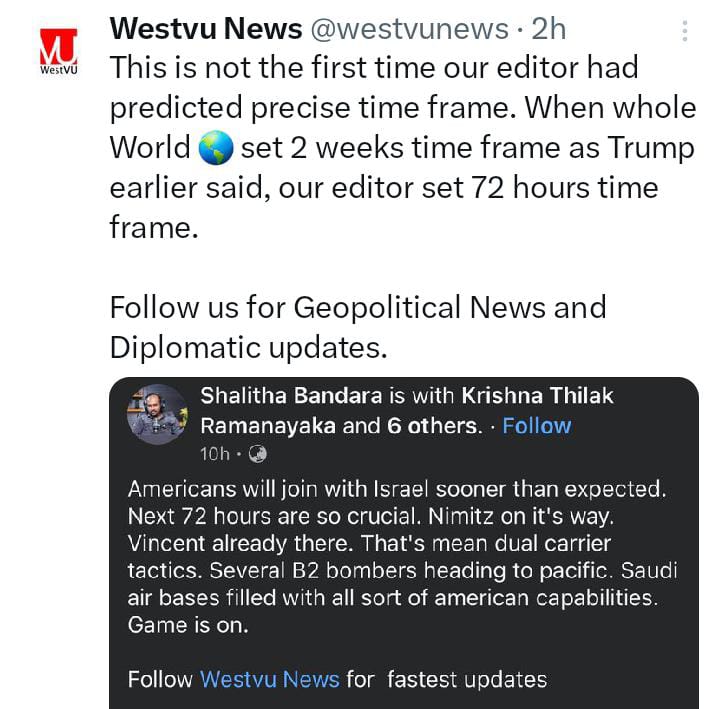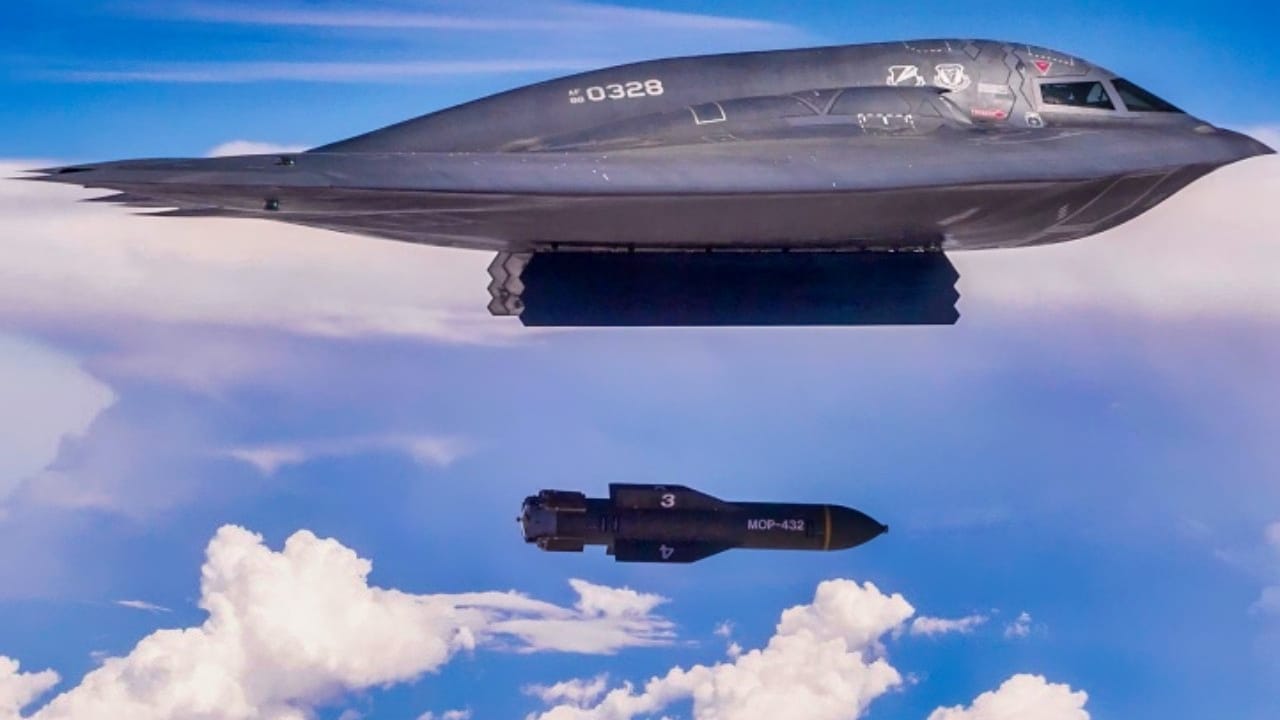President Donald Trump announced the successful completion of a precision U.S. military operation targeting Iran’s nuclear facilities Fordow, Natanz, and Esfahan on Saturday, June 21, 2025. Hailed as a “complete and total military success,” the strikes have significantly destroyed Iran’s nuclear program, with Trump declaring the targeted sites “effectively neutralized.”

How we predicted the US involvement
Remarkably, Westvu team accurately predicted U.S. military involvement in the conflict prior to the strikes. In a post shared earlier, we warned: “Americans will join with Israel sooner than expected. Next 72 hours are so crucial. Nimitz on its way. Vincent already there. That’s mean dual carrier tactics. Several B-2 bombers heading to Pacific. Saudi air bases filled with all sort of American capabilities. Game is on.” This prescient analysis shows the strategic buildup of U.S. forces, including the deployment of the USS Nimitz and USS Vincent aircraft carriers, B-2 bombers repositioning to the Pacific, and increasing U.S. capabilities at Saudi air bases. The foresight, based on these military movements, correctly anticipated the U.S.’s decisive entry into the conflict within the critical 72-hour window.

Weapons Used and Military Assets Involved
US Air Force B-2 Spirit stealth bombers dropped 12 GBU-57A/B Massive Ordnance Penetrator (MOP) bombs (also known as “bunker busters”) on the heavily fortified Fordow facility. According to CNN, six B-2 bombers were involved, with one additional B-2 dropping two bunker busters on Natanz. Each 30,000-pound GBU-57, equipped with a 6,000-pound warhead, is uniquely capable of penetrating Fordow’s underground complex, which is buried up to 90 meters beneath a mountain.
After this massive air assault, U.S. Navy submarines launched about 30 Tomahawk Land Attack Missiles (TLAMs) targeting surface infrastructure at Natanz and Esfahan. These cruise missiles, fired from about 400 miles away, ensured precise strikes on critical nuclear sites. This shows U.S.’s ability to execute a coordinated, multi-domain campaign. No other nation has that kind of proven ability so far.
The operation, conducted in close coordination with Israel, built on Israel’s “Operation Rising Lion,” the preemptive strike which began June 12, 2025, to weaken Iran’s air defenses and missile capabilities. Israel’s limited capacity to penetrate Fordow’s fortifications led to U.S. involvement, leveraging the B-2’s unique ability to deploy bunker busters. The campaign aimed to halt Iran’s nuclear ambitions, with intelligence suggesting Iran was weeks away from developing a nuclear weapon. The American strikes focused solely on nuclear infrastructure.
Iran is yet to make a major retaliation strike. However, Iran’s IRNA news agency acknowledged the strikes but claimed nuclear materials were evacuated before the attack. This claim is yet to confirm. First question is can we just move nuclear materials without noticing other parties. Iran officials, denying a weapons program and vowed retaliation. Tension between these nations are far from over.





